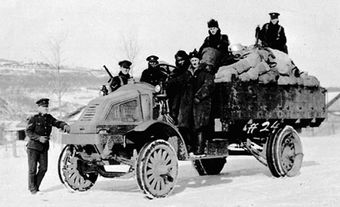Clayton Knight Committee
The Clayton Knight Committee (Canadian Aviation Bureau) was a committee formed in 1940 to recruit American aviators to the BRITISH COMMONWEALTH AIR TRAINING PLAN (BCATP). As Hitler imposed his expansionist policy upon Europe, Britain and the Commonwealth countries realized they would have to create a major air force to stop him. To do this, Britain, Australia, New Zealand and Canada developed the BCATP. The ambitious undertaking graduated more than 130 000 aircrew, of which 50 000 were pilots, from the 4 founding countries, other Commonwealth nations, the US and Europe.
Though not widely known at the time, the BCATP was assisted by the efforts of the renowned Canadian WWI ace Billy BISHOP, who conceived of, and established, the Clayton Knight Committee. Six months before Germany precipitated WORLD WAR II by attacking Poland on 1 September 1939, Bishop recognized the upcoming need to train aircrew. He knew first-hand the inadequacies of the RCAF to recruit the necessary personnel to train so many airmen. His solution was to tap the rapidly maturing American aviation industry for BCATP flying instructors and pilots.
Bishop collaborated with two WWI pilots, an American friend, Clayton Knight, and Canadian Homer Smith, to identify the requirements for bringing Americans into the RCAF without violating US law concerning Americans in foreign armed forces. He also obtained the offer of financial support from Smith, who was heir to an oil fortune.
A week after finalizing his collaborations with Knight and Smith, Bishop was sufficiently prepared to organize a meeting with American President Roosevelt, which was held at the White House in March 1939. Following this pivotal meeting with President Roosevelt, Bishop, Knight, and Smith put a name to their US recruitment effort: The Clayton Knight Committee. Knight would serve as director and coordinator.
Knight was initially quite sensitive to the public nature of the endeavour, and sought to carry out the program covertly, so as not to upset Americans. Smith was opposed to the idea of secrecy for such a worthwhile objective. He advocated establishing headquarters in the Waldorf-Astoria Hotel in New York and organizing branch offices in high-profile locations across America. This move guaranteed the success of the program and made it easier for inquiring instructors to enlist with the BCATP.
Shortly after the Allies declared war on 3 September 1939, the Clayton Knight Committee was able to reveal its early success; a list of 300 American instructors. They were experienced pilots with Instrument Flight Rules (IFR) qualifications; many had multi-engine time. They were eager to come to Canada under contract as civilian pilots to the Canadian Aviation Bureau.
The Canadian Air Staff accepted these bounties with alacrity. Even the potential obstacle of American recruits pledging allegiance to the British monarch upon joining the RCAF, which could result in forfeiture of citizenship, was overcome when the Canadian government passed an Order in Council replacing the oath of allegiance with a temporary agreement to obey RCAF rules and discipline for the duration of their service.
When Japan attacked Pearl Harbor on 7 December 1941, forcing the US into the war, there were 6129 American aircrew serving in the RCAF. Slightly more than half, 3886, were under training with the BCATP. All were given the opportunity to return to the US; 3797 transferred back to their own forces. In total, between 1939 and 1945, 8864 Americans served in the RCAF, with 5263 completing their service; 704 were killed in training or combat. An additional 300 Americans served in the RAF.
A letter of gratitude for the services Americans rendered to Canada was sent to the United States by Air Ambassador C.G. Power that read: "It is with sincere regret, but pride in the role that they played, that we part with the Americans who fitted into our organization and formed such a formidable team with our own Canadian airmen."

 Share on Facebook
Share on Facebook Share on X
Share on X Share by Email
Share by Email Share on Google Classroom
Share on Google Classroom


